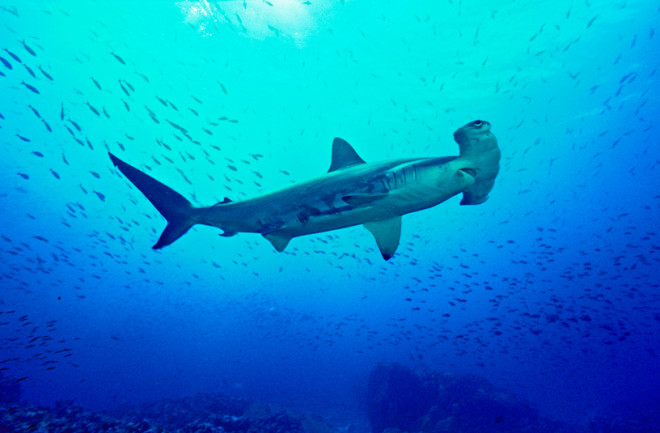Marine scientists are sounding the alarm for the protection of endangered hammerhead sharks amid growing concerns about human interference with these apex predators. While various anti-shark devices claim to keep them away from humans, marine ecologists argue that some populations of hammerheads urgently need safeguarding from human activities.
Scalloped hammerhead sharks, distinguished by the notches along their unique heads, are critically endangered. Despite their dwindling numbers worldwide, our understanding of them remains limited. However, recent years have witnessed an increase in sightings of these marine creatures, particularly along Queensland’s Gold Coast and the west coast near Perth.
The appearance of these enigmatic sharks, especially in large numbers, has attracted attention from anglers and divers equipped with video cameras. Concerns raised by researchers have prompted suggestions for establishing marine sanctuary zones and implementing codes of conduct for human interaction.
In March and April, over 100 young hammerheads, ranging from tiny pups to more mature individuals, were spotted schooling in the shallows off Burleigh Heads. This phenomenon, observed for the second consecutive year, indicates a need for protective measures, as these gatherings are vulnerable to human disturbances.
Young hammerheads, being prey for larger shark species, form large aggregations for protection. However, their presence in easily accessible areas like Burleigh Heads poses risks, with some individuals being chased by swimmers and anglers. Improper handling or disturbance can lead to stress and even death for these vulnerable sharks.
To address these challenges, suggestions include the development of a human interaction code of conduct and the establishment of sanctuary zones. Such measures aim to minimize disturbances and protect these endangered sharks while they frequent areas like Burleigh Heads and Shoalwater.
While some progress has been made in discussions about these protective measures, there is still uncertainty about their implementation. However, ongoing research efforts seek to better understand hammerhead habitats and movements, essential for formulating effective conservation strategies.
The looming threat of climate change adds urgency to the need for conservation measures, as warming oceans may alter the distribution and behavior of hammerhead populations. Ensuring the protection of key habitats becomes crucial in the face of rapid environmental changes, highlighting the importance of proactive conservation efforts to safeguard these mysterious oceanic creatures.















































